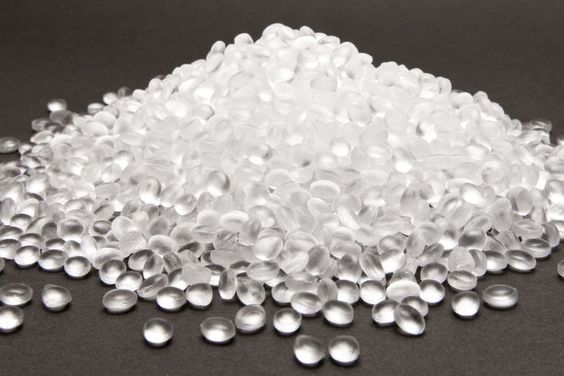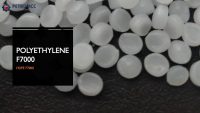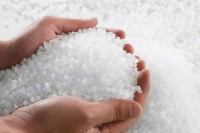Project Description
Aras Petrochemical company is a manufacturer of different grades of Polyethylene compound for using in plastic industries. Polyethylene compound refers to a material composed of polyethylene resin blended with various additives or modifiers to achieve specific properties or performance characteristics. Polyethylene itself is a versatile thermoplastic polymer widely used in various applications due to its excellent chemical resistance, low moisture absorption, and relatively low cost.
The addition of additives or modifiers can alter the physical, mechanical, thermal, or electrical properties of polyethylene to suit particular end-use requirements.
| Name | Polyethylene Compound |
| Manufacturer | ARAS PETROCHEMICAL |
| Made By | PETRO-ACC |
| Product Codes | AP 209 – AP F7000 – AP 62N07 – AP52518 |
POLYETHYLENE COMPOUND FEATURES
Polyethylene is a versatile polymer that finds extensive use in various industries due to its favorable combination of properties. When referring to a “polyethylene compound,” it typically means polyethylene blended with other additives or compounds to enhance specific properties or tailor it for certain applications. Here are some common features and characteristics of polyethylene compounds:
Chemical Resistance: Polyethylene compounds generally exhibit excellent resistance to chemicals, making them suitable for applications where exposure to various substances is expected, such as in packaging materials, chemical containers, and pipes.
Flexibility and Toughness: Polyethylene compounds are known for their flexibility and toughness. They can withstand impacts and deformations without breaking, making them ideal for applications such as plastic bags, films, and flexible packaging.
Low Density: Polyethylene is a low-density material, which means it is lightweight. This property makes it useful in applications where weight reduction is important, such as in automotive components and lightweight structures.
Moisture Resistance: Polyethylene compounds typically have low moisture absorption rates, making them resistant to moisture-related degradation. This property is advantageous in outdoor applications and environments with high humidity.
Electrical Insulation: Certain types of polyethylene compounds possess excellent electrical insulation properties, making them suitable for use in cables, wires, and electrical components.
Ease of Processing: Polyethylene compounds can be easily processed using various methods such as extrusion, injection molding, and blow molding. This ease of processing contributes to their widespread use in manufacturing.
Temperature Resistance: While polyethylene has relatively low melting and softening points compared to other engineering plastics, compounded forms can be modified to withstand higher temperatures, expanding their range of applications.
UV Resistance: Some polyethylene compounds are formulated to resist degradation from ultraviolet (UV) radiation, prolonging their lifespan in outdoor applications exposed to sunlight.
Colorability: Polyethylene compounds can be easily pigmented or colored to meet specific aesthetic requirements or to differentiate products in the market.
Recyclability: Polyethylene is recyclable, and many polyethylene compounds can be reprocessed and reused in various applications, contributing to sustainability efforts.
POLYETHYLENE COMPOUND APPLICATIONS
Polyethylene compounds find applications across a wide range of industries due to their versatile properties. Some common applications include:
Packaging: Polyethylene compounds are extensively used in packaging applications due to their excellent barrier properties, flexibility, and durability. They are used in the production of various packaging materials such as plastic bags, films, shrink wraps, and bottles.
Construction: In the construction industry, polyethylene compounds are used for pipes, fittings, geomembranes, and insulation materials. High-density polyethylene (HDPE) pipes, for example, are widely used for water and gas distribution due to their corrosion resistance and flexibility.
Consumer Goods: Polyethylene compounds are used in the manufacturing of a wide range of consumer goods such as toys, containers, crates, and household products due to their lightweight nature, ease of molding, and cost-effectiveness.
Automotive: Polyethylene compounds find applications in automotive components such as fuel tanks, bumpers, interior trim, and under-the-hood parts due to their impact resistance, chemical resistance, and lightweight properties.
Electrical and Electronics: Polyethylene compounds are used in the electrical and electronics industry for cable insulation, wire coatings, and electronic components due to their excellent electrical insulation properties and resistance to moisture and chemicals.
Agriculture: In agriculture, polyethylene compounds are used for greenhouse films, mulching films, irrigation pipes, and agricultural tanks due to their UV resistance, flexibility, and durability.
Medical: Polyethylene compounds are used in medical applications such as medical packaging, prosthetics, orthotics, and medical devices due to their biocompatibility, sterilizability, and ease of fabrication.
Sports and Leisure: Polyethylene compounds are used in the manufacturing of sports equipment, recreational gear, and outdoor furniture due to their durability, weather resistance, and lightweight properties.
Industrial: Polyethylene compounds find applications in various industrial applications such as industrial tanks, chemical storage containers, and industrial liners due to their chemical resistance and durability.
Food Industry: Polyethylene compounds are used in food packaging, food processing equipment, and food storage containers due to their non-toxic nature, moisture resistance, and barrier properties.
POLYETHYLENE COMPOUND FORMULATION
Compound formulations of polyethylene can be tailored to meet specific application requirements. Here’s a general outline of a polyethylene compound formulation:
Base Polymer: Polyethylene is the primary component of the compound. It can be categorized into different types based on density:
Low-Density Polyethylene (LDPE)
High-Density Polyethylene (HDPE)
Linear Low-Density Polyethylene (LLDPE)
Medium-Density Polyethylene (MDPE)
Additives: Various additives can be incorporated into the polyethylene compound to enhance specific properties or impart new ones:
Antioxidants: These prevent oxidation and degradation of the polymer during processing and service life.
UV Stabilizers: Protect the polymer from degradation caused by exposure to ultraviolet (UV) radiation.
Processing Aids: Improve the processability of the polymer during manufacturing.
Slip Agents: Reduce friction between polymer surfaces, improving handling and processing.
Antiblock Agents: Prevent the adhesion of polymer layers, improving film and sheet processing.
Colorants: Additives used to impart color to the polymer.
Flame Retardants: Additives that reduce the flammability of the polymer.
Fillers: Materials like calcium carbonate, talc, or silica may be added to improve stiffness, reduce cost, or modify other properties.
Modifiers: Including materials like ethylene vinyl acetate (EVA) to improve flexibility or impact resistance.
Processing Aids: These aids facilitate the manufacturing process and improve the quality of the final product. Examples include lubricants and mold release agents.
Compatibilizers: These are used in blends of polyethylene with other polymers to improve compatibility and mechanical properties.
Cross-Linking Agents (for cross-linked polyethylene): In some cases, polyethylene is cross-linked to enhance properties like temperature resistance and mechanical strength. Cross-linking agents like peroxides or silane compounds are used for this purpose.
Fillers and Reinforcements: Depending on the application, fillers such as glass fibers, carbon fibers, or minerals may be added to enhance mechanical properties like stiffness and strength.
Processing Conditions: Parameters such as temperature, pressure, and mixing time during compounding are critical factors that influence the final properties of the polyethylene compound.
POLYETHYLENE COMPOUND PACKING
Polyethylene Compound of Aras Petrochemical company packing would be in different types:
20 kg polypropylene bags with pallets.
Polyethylene Compound capacities for a different way of shipments would be as below:
20ft & 40ft containers for sea shipment:
20ft FCL: 13 MT/20 kg bags with pallets
40ft FCL: 25 MT/20 kg bags with pallets
The capacity of a Full truck: 25 MT
POLYETHYLENE COMPOUND STORAGE
Storing polyethylene compounds properly is crucial to maintaining their quality and performance. Polyethylene is a versatile polymer used in various applications, including packaging, pipes, automotive parts, and more. Here are some general guidelines for storing polyethylene compounds:
Temperature Control: Polyethylene compounds should be stored in a cool, dry place away from direct sunlight and heat sources. Elevated temperatures can cause the material to degrade, leading to reduced performance and potential safety hazards.
Humidity Control: Moisture can adversely affect the properties of polyethylene compounds. Store them in a dry environment to prevent moisture absorption, which can lead to degradation and poor performance.
Ventilation: Adequate ventilation in the storage area helps prevent the buildup of volatile gases or fumes that may affect the quality of the polyethylene compounds.
Protection from Contaminants: Keep the compounds away from sources of contamination such as dust, dirt, oils, solvents, and chemicals. Contaminants can compromise the integrity and performance of the material.
Proper Packaging: Store polyethylene compounds in their original packaging or in sealed containers to protect them from external elements. Ensure that the packaging is intact and free from damage to maintain the material’s quality.
Handling: When handling polyethylene compounds, use appropriate equipment and follow proper handling procedures to prevent contamination and damage. Avoid dropping or mishandling the containers to minimize the risk of spills or leaks.
Labeling and Organization: Clearly label containers with the type of polyethylene compound, batch number, and any other relevant information. Organize the storage area to facilitate easy access and inventory management.
First-In, First-Out (FIFO): Implement a FIFO system to ensure that older stock is used first, minimizing the risk of material degradation due to prolonged storage.
Security Measures: Secure the storage area to prevent unauthorized access and theft. Additionally, ensure compliance with any regulatory requirements related to the storage of polyethylene compounds.
By following these guidelines, you can help ensure that polyethylene compounds remain in optimal condition for their intended applications.
POLYETHYLENE COMPOUND SPECIFICATIONS
Linear Low Density Polyethylene Compound (AP-209)
| PROPERTIES | Result | Unit | Test Method |
| Density (23°C) | 0.920 | g/cm | ISO 1183 |
| Melt Flow Rate (190 °C/2.16 kg) | 0.9 | g/10min | ISO 1133 |
| Tensile Strength at Yield (MD/TD) | 10/11 | MPa | ISO 527 |
| Tensile Strength at Break (MD/TD) | 41/32 | MPa | ISO 527 |
| Elongation at Break (MD/TD) | 620/840 | % | ISO 527 |
| Tear Strength (MD/TD) | 145/370 | g/25m | ASTM D 1922 |
| Ash Content | 3 ± 0.1 | % | ASTM D 5630 |
Polyethylene Compound (AP-F7000)
| PROPERTIES | Result | Unit | Test Method |
| Density | 0.954 | g/cm3 | ASTM D 1505 |
| Melt Flow Rate (190 °C/2.16 kg) | 0.04 | g/10min | ASTM D 1238 |
| Melting Point | 131 | °C | ASTM D 2117 |
| Tensile Strength at Break | MD: 620 , TD: 310 | kg/cm2 | ASTM D 638 |
| Elongation at Break | MD : 240 , TD : 450 | % | ASTM D 638 |
| Ash Content | 3 ± 1 | % | ASTM D 5630 |
Polyethylene Compound (AP-62N07)
| PROPERTIES | Result | Unit | Test Method |
| Density | 0.962 | g/cm3 | ASTM D 1505 |
| Melt Flow Rate | 7 | g/10min | ASTM D 1238 |
| Flexural | 1500 | MPa | ASTM D 790 |
| Tensile Strength at Break | 12 | MPa | ASTM D 638 |
| Elongation at Break | 852 | % | ASTM D 638 |
| Ash Content | 3 ± 1 | % | ASTM D 5630 |
Polyethylene Compound (AP-52518)
| PROPERTIES | Result | Unit | Test Method |
| Density | 0.952 | g/cm3 | ASTM D 1505 |
| Melt Index | 18 | g/10min | ASTM D 1238 |
| Vicat Softening Point | 122 | °C | ASTM D 1525 |
| Flexural Modulus | 1350 | MPa | ASTM D 790 |
| Notched Izod Impact @ 23 °C | 25 | J/m | ASTM D 256/A |
| Ash Content | 3 ± 1 | % | ASTM D 5630 |





